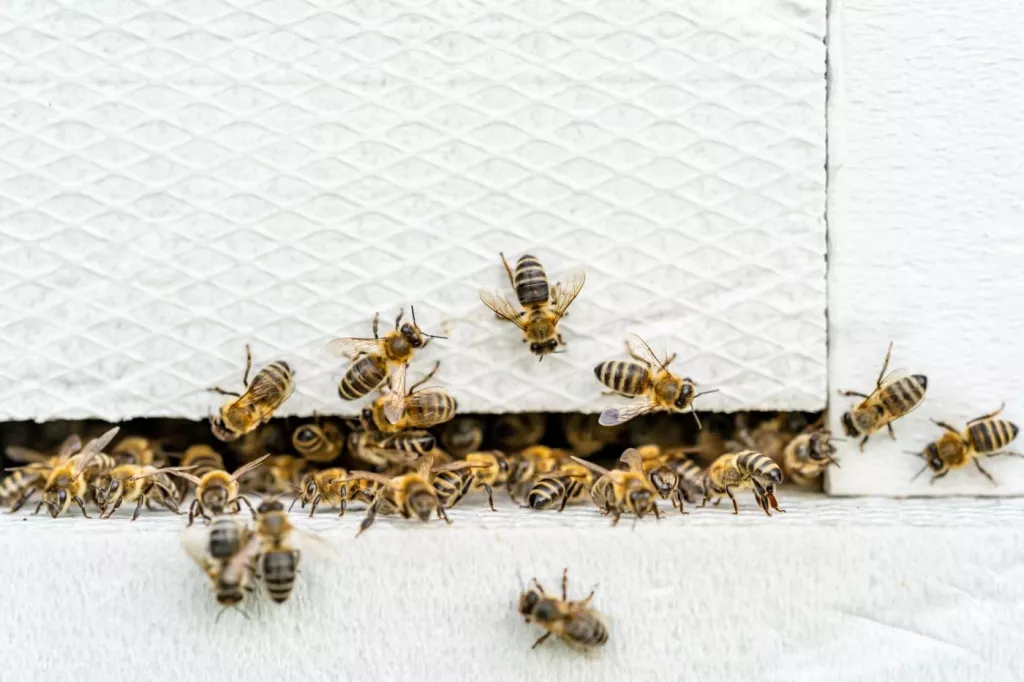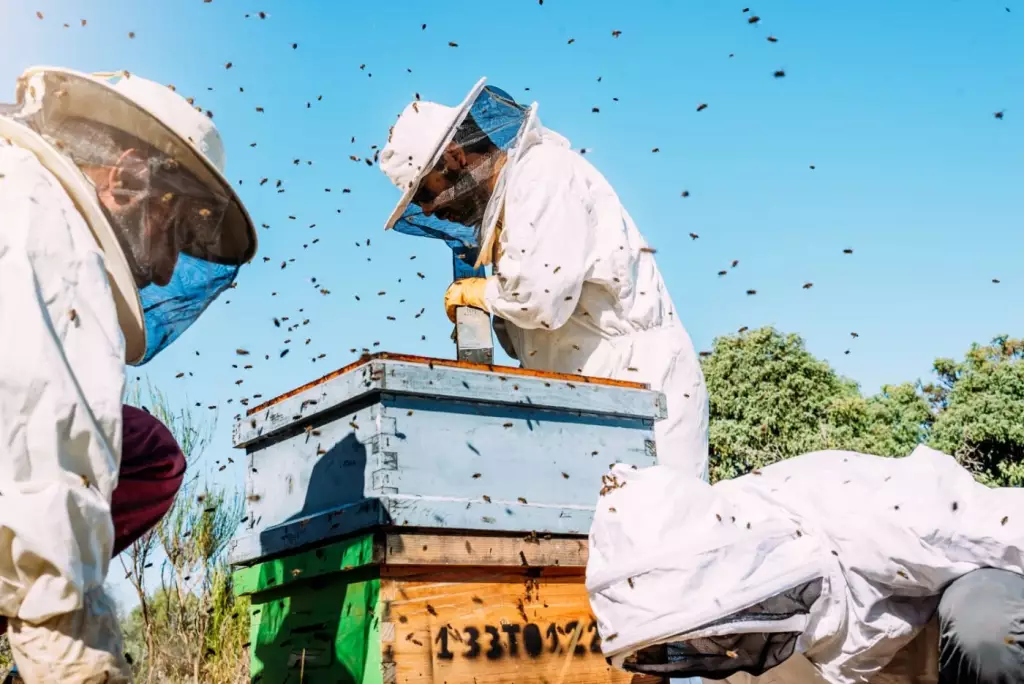Are Bees More Aggressive In the Heat?
Bees are generally peaceful, but may become more aggressive under certain conditions. One primary factor for this behavior is heat.
Bees are more aggressive in the heat. Hot and humid weather can increase bee aggression because bees rely on pheromones to signal danger, and heat can amplify those signals. Bees dislike having their hives disturbed, and higher temperatures are a sensory cue that something is amiss.
In this article, we will learn how temperature influences bee behavior and how it can help us create safer environments for humans and bees alike.
Summary
- Bees use pheromones to warn of danger, so hot, humid weather can make them more aggressive.
- As long as the temperature is between 65 and 95 °F, the bees should be fine.
- Bees grow in number and are particularly aggressive from May through July as they make a strong effort to protect their young.
- Bees spend the most of their morning foraging for nectar and pollen, so they are typically more aggressive in the afternoon to protect what was obtained earlier in the day.

On this page:
How Heat Causes Bee Aggression
The weather plays a significant role in the health of a bee colony. During hot weather, bee colonies can suffer debilitating stress due to the intense temperatures. When exposed to hot air, bees huddle together to keep themselves and their queen as cool as possible.
According to research, hot, humid conditions can make bees more aggressive because they employ pheromones to warn of danger. Heat can magnify these signals, raising the alert level or perceived risk. Higher temperatures signal that something is wrong for bees, who loathe having their colonies disturbed.
Temperature That is Too Hot for Bees
Bees can typically handle a wide range of temperatures—as long as the temperature is between 65 and 95 °F, bees should be comfortable. At this temperature range, they will move their wings more quickly to cool themselves down, but their hives can suffer if there is no way to escape the heat.
Over 95 °F, however, things get a little uncomfortable for our buzzing friends. When the heat level rises too high, it affects their flight and ability to move from flower to flower.
Honey production and larval development can be halted, and the queen bee's fertility can drastically lower if exposed to extended periods of extreme heat. So while bees are resilient creatures, it is essential to know what temperature is too hot for them to ensure they get the best care possible.

Months When Bees Are Most Aggressive
Bees are most active during the warm summer months when nectar and pollen are abundant, so it's no surprise that this is when hives tend to be their most defensive. Depending on the location, late spring and early summer can be particularly tricky times for bees; from May through July, bees increase in population and are at their most aggressive as they work hard to protect their young.
Bees typically remain active until October or November in some areas, but June usually marks the peak of bee aggression across much of North America. Be careful around hives during this time, as bee stings can cause serious harm if you're allergic to them.
Time of Day When Bees are Most Aggressive
While bees can be unpredictable, they are generally more aggressive in the afternoon—usually between 11 a.m. and 4 p.m. It is because most of their morning hours are spent foraging for nectar and pollen, so once they return to the hive in the afternoon, they become more defensive as they prepare to protect what was collected earlier in the day.
This increased aggression is due to their reliance on external temperatures to maintain what is known in bees as “optimal foraging temperature.”
During peak hours of heat, bees become more defensive of what they perceive as threats to their hive (namely humans) and are thus more likely to sting. Because of this, it is advised that beekeepers limit activity near hives during these hours.
How Do Bees Deal with Heat
When bees get too hot, they cool down in several ways. One way is through what biologists call "belly fanning," in which bees rapidly move their wings to create a cooling breeze on their bellies. Furthermore, bees have what are known as "cooling fans" located in their thoraxes that can be quickly deployed when the heat gets intense.
To further reduce heat, some bees will use what is called the "beeswax granule pump," where they use their heads and mandibles to pump air through the wax granules they create. Combining these three mechanisms, honey bees can effectively mitigate extreme temperatures and keep cool when the weather is blazing hot.
There is another way for bees to regulate their body temperature during hot weather. When the ambient temperature is too high, they look for larger water sources, such as puddles from sprinklers or melting snow. By gathering around the water, the bees can stay cool through what is known as evaporative cooling—when the evaporation of liquid into gaseous form creates a cooling effect on its surroundings.
This behavior is seen in bee swarms, where hundreds sometimes congregate around one large water source to create evaporative cooling zones. So when it gets too hot, bees instinctively flock to the water to keep their bodies at an optimal temperature.

How Can Beekeepers Mitigate Bees’ Heat Aggression
As a beekeeper, it is essential to know how to make bees less aggressive when temperatures are high. One of the most important steps you can take to mitigate the aggression is to ensure your colony is well-fed and hydrated. During the hot summer months, bees need plenty of fresh water near the hive site in addition to supplemental feedings with sugar syrup. Keeping a shallow dish of water close by is also essential.
Beekeepers can ensure ample forage for the bees by providing plenty of flowers and suitable pollen sources near the hive. This will help ensure they stay relaxed while searching for food. In addition, the shade provided by plants provides a natural cooling system through which the hives can escape the direct sunlight and avoid heat stroke or exhaustion.
Finally, adding sugar to tall plants with deep flowers may give them an energy boost on the hottest days. Another suggestion is to trim away any foliage near the hive that is trapping heat. Keeping debris away from the entrance of hives will help them feel calm, since it reduces their need to defend against potential intruders.